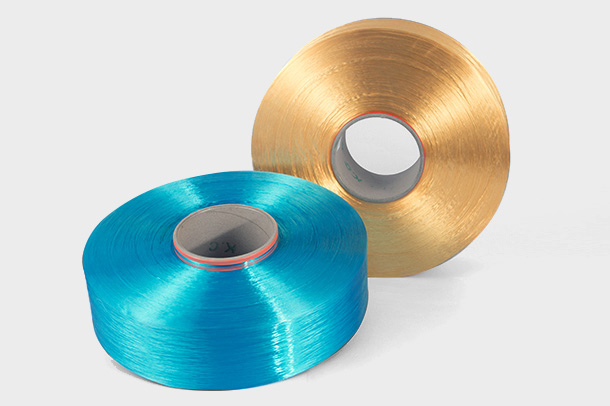Abstract:Abstract: Polyester filament, as the name suggests, is made of polyester filament. Polyester is an important variety of ...
Abstract:
Polyester filament, as the name suggests, is made of polyester filament. Polyester is an important variety of synthetic fibers, and is the trade name of polyester fibers in my country. The so-called polyester filament is a filament with a length of more than one kilometer. The filament is wound into a group and has the characteristics of high strength, good heat resistance and good elasticity. Polyester filament can be seen everywhere in life and is often used in the manufacture of clothing and industrial products. It can be used to make clothing, bedding, decoration, protective clothing, etc. Let's take a look at the characteristics and uses of polyester filament!
1. What are the characteristics of polyester filament
1. Strength
Polyester fiber is nearly 1 times stronger than cotton and 3 times stronger than wool, so polyester fabrics are strong and durable.
2. Heat resistance
It can be used at -70℃~170℃, which is the best heat resistance and thermal stability among synthetic fibers.
3. Elasticity
The elasticity of polyester is close to that of wool, and its wrinkle resistance exceeds that of other fibers. The fabric does not wrinkle and has good shape retention.
This picture is provided by registered user "Internet Talk", copyright notice feedback
4. Wear resistance
The abrasion resistance of polyester is second only to nylon and ranks second among synthetic fibers.
5. Water absorption
Polyester has low water absorption and moisture regain and good insulation performance, but due to low water absorption, large static electricity generated by friction, and poor natural adsorption performance of dyes, polyester is generally dyed by high temperature and high pressure dyeing method.
6. Dyeing
Polyester itself lacks hydrophilic groups or dye acceptor parts, so polyester has poor dyeability. It can be dyed with disperse dyes or non-ionic dyes, but the dyeing conditions are harsh.
2. What is the classification and use of polyester filament
1. Classification
(1) According to the production method
a. Primary yarn: undrawn yarn (conventional spinning) (UDY), semi-pre-oriented yarn (medium-speed spinning) (MOY), pre-oriented yarn (high-speed spinning) (POY), high-oriented yarn (ultra-high-speed spinning) spinning) (HOY).
b. Drawing silk: drawing silk (low-speed drawing silk) (DY), full drawing silk (spinning and drawing one-step method) (FDY), full-drawing silk (spinning one-step method) (FOY)
c. Textured yarn: conventional textured yarn (TY), stretched textured yarn (DTY), and air textured yarn (ATY).
(2) According to the purpose
Mainly divided into civil and industrial use.
2, the use of polyester filament
In the early days, polyester filament was mainly used in silk clothing. With the development of various processing technologies, polyester filament has been expanded to the entire clothing field such as wool-like, linen-like, and cotton-like, and has also been used in decoration, industry and non-fiber fields. develop. In particular, new synthetic fibers made of polyester filaments have recently become popular in the clothing industry in Japan. The so-called new synthetic fibers are synthetic fibers that have a new, unique style and feel that surpasses any natural fiber. It has changed people's concept of dressing, and has risen from warmth and beauty to comfort, health, novelty and artistry. Thus, the use of polyester filament becomes more extensive.
(1) For clothing
The traditional use of polyester filament is to imitate silk for women's shirts, men's and women's outerwear, skirts, pajamas and scarves. The fine and special filaments are strongly twisted before being deformed, and can be made into soft imitation silk, which is suitable for high-end dresses and "grandma shirts" worn by middle-aged and elderly women. Coarse and special textured yarn can be made into wool fabrics for suits, outerwear and ties, but the dimensional stability of its knitted fabrics is not ideal. Blended yarns are mainly used in men's clothing, children's clothing and sportswear.
(2) Bedding
Used as quilt cover, pillowcase, bed sheet, bedspread, mosquito net, tablecloth and cotton wool, etc.
(3) For decoration
Used as sofa cloth, furniture cloth, curtain cloth, window screen cloth, wall cloth, carpet, poncho, umbrella cloth and car interior decoration cloth, etc.
(4) Industrial use
Used as sewing thread, cord, conveyor belt, canvas, geotextile, filter cloth, tent, net and rope, etc.
(5) For non-fibrillation
Faux suede made of microfiber for fur coats, leather jackets, women's tops, etc.
(6) Field of protective clothing
According to the national standards for flame retardant protective clothing, metallurgy, forestry, chemical, petroleum, fire protection and other departments should use flame retardant protective clothing. The number of people who should use flame retardant protective clothing in China is more than one million, and the market potential of flame retardant protective clothing is huge. In addition to pure flame-retardant polyester, we can produce multi-functional products such as flame-retardant, waterproof, oil-repellent and anti-static according to the special requirements of users. For example, the waterproof and oil-repellent finishing of flame-retardant polyester fabrics can improve the functionality of flame-retardant clothing; flame-retardant polyester and conductive fibers are interwoven to produce antistatic flame-retardant fabrics; flame-retardant fibers and high-performance fibers are used for blending and interweaving , which can produce high-performance flame-retardant fabrics; flame-retardant fibers are blended with cotton, viscose and other fibers to improve the comfort of protective clothing while reducing secondary burns.
Polyester is used as a clothing fiber, and its fabrics are wrinkle-free and iron-free after washing. Polyester is often blended or interwoven with various fibers, such as cotton polyester, wool polyester, etc., and is widely used in various clothing and decorative materials. Polyester can be used for conveyor belts, tents, canvas, cables, fishing nets, etc. in industry, especially polyester cords used for tires, which are close to nylon in performance. Polyester can also be used for electrical insulating materials, acid-resistant filter cloth, medical industrial cloth, etc. Synthetic fibers have been widely used in various fields of the national economy due to their high strength, wear resistance, acid resistance, alkali resistance, high temperature resistance, light weight, warmth retention, good electrical insulation and resistance to mildew.

